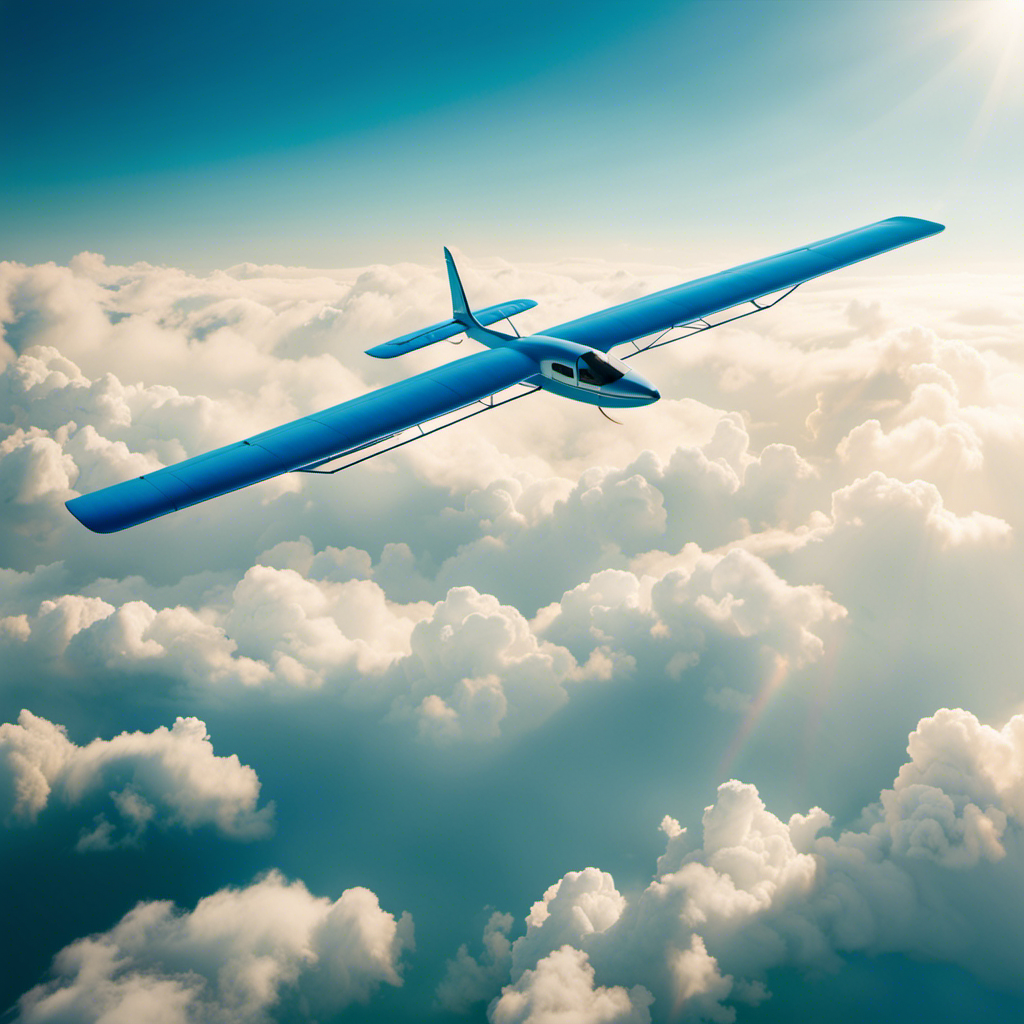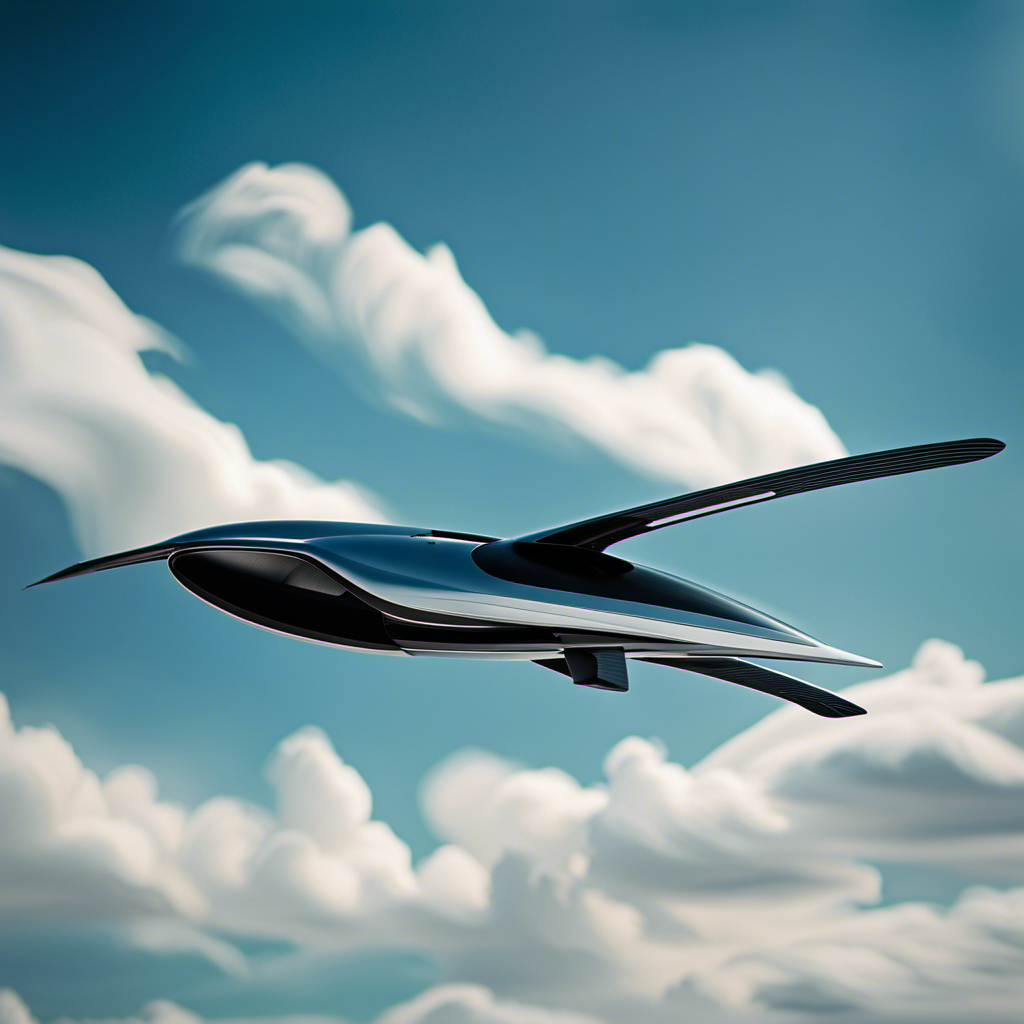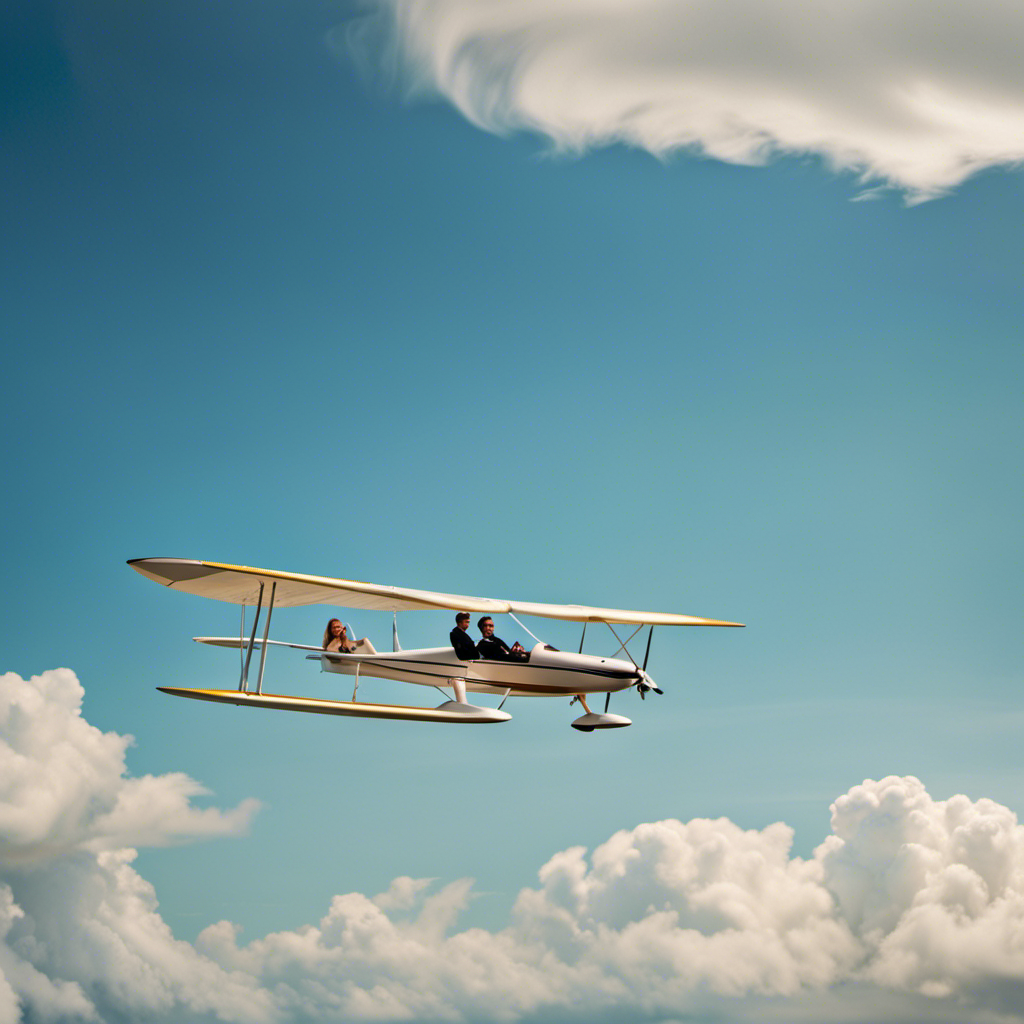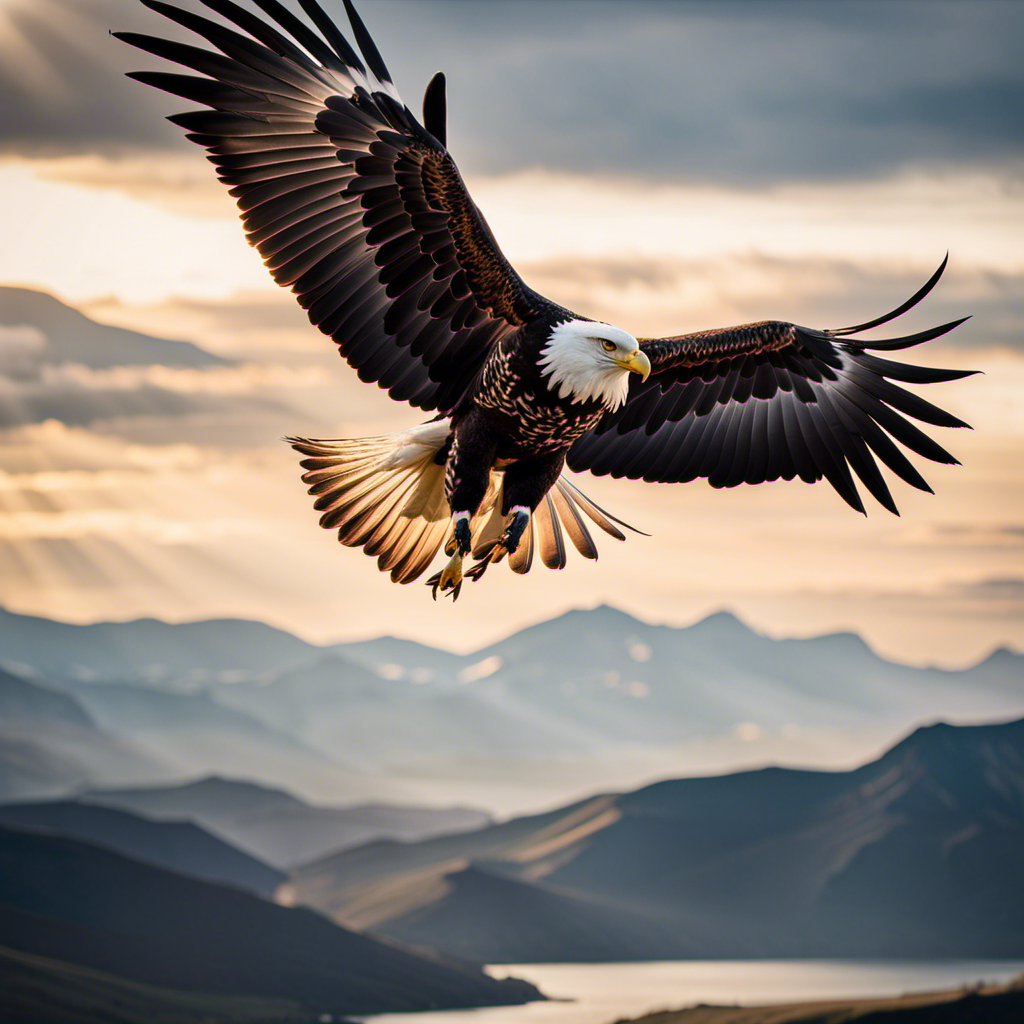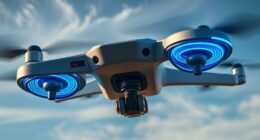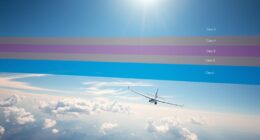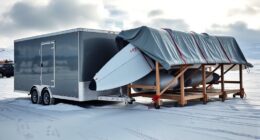Have you ever thought about what sets gliding apart from flying?
In this article, we will delve into the intricacies of these two aerial activities and explore their fundamental differences.
From the mechanics behind each method to the skills required and the equipment used, we will provide you with a comprehensive understanding of the distinctions between gliding and flying.
So buckle up and prepare to soar through the fascinating world of aviation!
Key Takeaways
- Gliding requires less infrastructure and is more accessible to those without access to airports or airfields, while flying requires airports and airfields for takeoff and landing, limiting accessibility.
- Gliding offers a quiet and serene experience, allowing for immersion in peaceful surroundings and appreciation of the beauty of the surroundings, while flying offers a thrilling experience with a focus on speed and control, providing a rush of adrenaline.
- Flying involves experiencing incredible speeds and maneuverability, with controls allowing for precise adjustments and instant responses, while gliding relies on the forces of nature for lift and propulsion and requires advanced gliding techniques.
- Gliding allows access to remote or inaccessible locations and can stay aloft for extended periods without an engine, making it suitable for recreational purposes, scientific research, and aerial photography, while flying is suitable for long-distance travel, transportation of goods and people, and exploration and discovery.
Definition and Basic Principles of Gliding and Flying
You may be wondering, what’s the difference between gliding and flying?
Gliding and flying are both methods of aerial locomotion, but they differ in the way they generate lift and achieve sustained movement through the air.
Gliding is the process of moving through the air without any active propulsion. It relies on utilizing the forces of gravity and air currents to stay aloft. Gliders, also known as sailplanes, have long wings and a streamlined body to maximize lift and reduce drag.
On the other hand, flying involves the use of powered propulsion, such as engines or propellers, to generate thrust and maintain altitude. Aircraft that can fly, like airplanes and helicopters, are capable of self-powered flight.
Now that you understand the basic principles of gliding and flying, let’s delve into the mechanics of these two methods of aerial locomotion.
Mechanics of Gliding vs. Flying
When gliding, your body uses air currents to stay aloft, while flying involves propelling yourself through the air using wings or engines. Gliding is a type of flight that relies on the natural forces of the atmosphere, while flying involves active propulsion.
Here are the key differences between gliding and flying:
-
Lift: Gliding relies on the lift generated by the air currents passing over the wings. In flying, lift is created by the wings’ shape and angle of attack, along with the propulsion system.
-
Energy Source: Gliding uses potential energy gained from altitude, converting it into kinetic energy to maintain flight. Flying, on the other hand, requires a continuous energy source, such as an engine or propulsion system.
-
Maneuverability: Gliders have limited maneuverability compared to aircraft with engines, which can control their speed, altitude, and direction more precisely.
Understanding the mechanics of gliding and flying helps us appreciate the different types of aircraft used in these activities.
Types of Aircraft Used in Gliding and Flying
To appreciate the various types of aircraft used in gliding and flying, it’s important to understand their unique characteristics.
Gliding typically involves the use of gliders, which are non-powered aircraft designed to stay airborne by utilizing the natural lift in the atmosphere. These aircraft rely on the skill of the pilot to find and exploit thermals and updrafts to maintain or gain altitude.
Gliders come in various forms, such as sailplanes and hang gliders, each with their own specific design and capabilities.
On the other hand, flying involves powered aircraft, such as airplanes and helicopters, which are equipped with engines to generate thrust and enable sustained flight. These aircraft have a wider range of capabilities, including the ability to take off and land vertically, hover, and fly at high speeds.
Transitioning into the next section, skills and training required for gliding and flying involve mastering the unique handling characteristics and techniques associated with each type of aircraft.
Skills and Training Required for Gliding and Flying
Mastering the handling and techniques of different aircraft is crucial when acquiring the skills and training required for gliding and flying. As a pilot, you must become proficient in understanding and operating the controls of various aircraft.
You will need to learn how to manipulate the flight controls, such as the yoke, throttle, rudder pedals, and flaps, to maintain stability and control during flight. Additionally, you must develop the ability to interpret and respond to various flight instruments, including the altimeter, airspeed indicator, and attitude indicator.
These skills can be acquired through a combination of classroom instruction, simulator training, and practical flight experience. Once you have mastered these fundamental skills, you can then focus on the differences in equipment and technology that are specific to gliding and flying.
Differences in Equipment and Technology
Understanding and operating different types of aircraft requires you to become familiar with the unique equipment and technology involved.
When it comes to gliding and flying, there are significant differences in the equipment used. Gliders, for example, rely solely on the aerodynamic forces of the air to stay aloft. They do not have an engine, so their equipment is designed to maximize lift and minimize drag. This includes features such as long wings and a sleek fuselage.
On the other hand, powered aircraft have engines that provide thrust. Their equipment includes propellers or jet engines to generate this thrust, as well as fuel systems, electrical systems, and navigation instruments.
These differences in equipment and technology affect the duration and range of gliding and flying, which we will explore in the next section.
Duration and Range of Gliding and Flying
Flying without an engine allows you to stay aloft for extended periods of time in a glider. Unlike powered aircraft, gliders don’t rely on fuel consumption, which gives them the advantage of longer durations and greater range. Gliders utilize the forces of nature, such as thermal updrafts and wind currents, to maintain and gain altitude. By skillfully maneuvering in these air pockets, glider pilots can stay in the air for hours, even reaching distances of hundreds of kilometers. This extended duration and range make gliding a popular choice for those who seek to explore the skies without the limitations of fuel.
However, when it comes to cost and accessibility, gliding and flying do have some differences to consider. [Transition to the next section about cost and accessibility of gliding and flying.]
Cost and Accessibility of Gliding and Flying
When it comes to the cost and accessibility of gliding and flying, there are some factors to consider. Here are two key considerations to keep in mind:
-
Cost:
-
Gliding: Gliding tends to be more cost-effective compared to flying. The initial investment for gliding equipment is relatively lower, and ongoing expenses such as maintenance and fuel are minimal.
-
Flying: Flying, on the other hand, can be more expensive. The cost of purchasing or renting an aircraft, fuel, insurance, and maintenance can add up quickly. Additionally, obtaining a pilot’s license requires training and certification, which can be another significant expense.
-
Accessibility:
-
Gliding: Gliding is more accessible to the general public. Many gliding clubs offer affordable memberships and training programs for beginners. Furthermore, gliders can take off from a variety of locations, including grass runways and designated gliding sites.
-
Flying: Flying requires more infrastructure and resources. Airports and airfields are needed for takeoff and landing, which can limit accessibility for those without access to such facilities.
Considering the cost and accessibility factors, it is important to weigh these considerations when deciding between gliding and flying.
Transitioning into the subsequent section about the ‘experience and sensations in gliding and flying,’ it is essential to understand the unique aspects of each activity beyond the cost and accessibility.
Experience and Sensations in Gliding and Flying
When you engage in gliding, you will experience the quiet and serene nature of this activity. As you soar through the sky, the absence of an engine noise allows you to fully immerse yourself in the peaceful surroundings.
In contrast, flying offers a thrilling experience with its focus on speed and control. With the ability to maneuver the aircraft at high velocities, you will feel the rush of adrenaline as you navigate through the skies.
Quiet and Serene Nature of Gliding
The peacefulness of gliding through the air can be truly breathtaking. As you soar above the earth, the absence of engine noise and the gentle whoosh of wind passing by create an atmosphere of tranquility.
The serene nature of gliding allows you to fully immerse yourself in the experience, feeling the air currents as they carry you effortlessly through the sky. The silence allows you to appreciate the beauty of your surroundings, whether it be the vast expanse of open fields or the majestic peaks of mountains below.
But gliding is not just about the calmness; it also offers a sense of freedom and control. As you transition into the next section about speed and control in flying, you will discover the exhilarating sensations that come with piloting an aircraft.
Speed and Control in Flying
As you pilot an aircraft, you’ll feel the rush of speed and the thrill of being in control. Flying is an exhilarating experience that offers a unique combination of power and precision. Here are four key aspects to consider when it comes to speed and control in flying:
-
Velocity: When you take to the skies, you’ll experience incredible speeds, depending on the type of aircraft you’re flying. Whether it’s a small propeller plane or a high-performance jet, the feeling of acceleration is undeniable.
-
Maneuverability: Flying allows you to navigate through the air with ease. With the use of controls such as the yoke, rudder pedals, and throttle, you have the ability to make precise adjustments and execute various maneuvers, including turns, climbs, and descents.
-
Responsiveness: A well-designed aircraft responds instantly to your inputs. As you manipulate the controls, you’ll feel the aircraft react to your commands, providing a sense of direct connection between you and the machine.
-
Adrenaline: The combination of speed and control creates an adrenaline-fueled experience. The rush of wind, the G-forces, and the knowledge that you are in complete command of the aircraft contribute to the thrill of flying.
With an understanding of the speed and control involved in flying, let’s explore the applications and uses of gliding and flying.
Applications and Uses of Gliding and Flying
One of the main benefits of gliding and flying is the ability to reach remote or inaccessible locations. Gliding, also known as soaring, is particularly useful in this regard. Gliders, or sailplanes, are designed to stay aloft for extended periods without the use of an engine. This makes them perfect for exploring areas that are difficult to access by other means.
Gliders can take advantage of thermal lifts, ridge lifts, and wave lifts to gain altitude and travel great distances. They are often used for recreational purposes, as well as for scientific research, aerial photography, and even search and rescue operations.
Flying, on the other hand, offers greater speed and control, making it suitable for long-distance travel and transportation of goods and people.
Conclusion: Exploring the Beauty of Gliding and Flying
You can truly appreciate the beauty of gliding and flying when you soar above the world and witness breathtaking landscapes. Gliding and flying offer unique experiences and perspectives that allow you to explore the wonders of the sky. Gliding involves the art of flying without an engine, relying solely on the forces of nature to stay aloft. On the other hand, flying typically refers to the act of piloting an aircraft with the assistance of an engine. Both activities require skill and knowledge to safely navigate the skies. To summarize the key differences between gliding and flying, refer to the table below:
| Gliding | Flying | |
|---|---|---|
| Definition | Flying without an engine | Flying with an engine |
| Forces of nature | Utilized for lift and propulsion | Assisted by engine for lift and propulsion |
| Skill required | Requires advanced gliding techniques | Requires piloting skills and engine management |
| Duration | Relies on thermal currents for longer flights | Can fly for extended periods with fuel |
| Equipment | Lightweight gliders and parachutes | Various types of aircraft with engines |
Frequently Asked Questions
How long does it take to become a licensed glider pilot?
To become a licensed glider pilot, it typically takes around 40 to 60 hours of flight time, depending on individual progress. This includes both theoretical instruction and practical training, covering topics like aerodynamics, meteorology, and flight procedures.
Can glider pilots fly at night?
No, glider pilots cannot fly at night. Gliders lack the necessary equipment for night flying, such as lights and instruments. Night flying requires visibility and navigation aids that gliders do not have.
Are there any restrictions on where gliders can fly?
There are restrictions on where gliders can fly. Gliders are not allowed to fly in restricted airspace, such as near airports or military installations, without prior permission from the appropriate authorities.
What is the difference in fuel consumption between gliders and powered aircraft?
Gliders have no fuel consumption as they rely solely on gravity and air currents for flight. Powered aircraft, on the other hand, consume fuel to generate thrust and maintain flight, resulting in higher fuel consumption compared to gliders.
Can you fly a glider in adverse weather conditions?
Yes, you can fly a glider in adverse weather conditions, but it requires skilled piloting. Gliders can use thermals, ridge lift, and wave lift to stay aloft, even in challenging weather.
Conclusion
So, now you have a comprehensive understanding of the differences between gliding and flying. You have delved into the intricate mechanics, explored the various types of aircraft, and learned about the necessary skills and training.
Additionally, you have examined the disparities in equipment and technology, as well as the costs and accessibility associated with both activities.
As you delve into the world of gliding and flying, you will be captivated by the exhilarating experience and the unique sensations they offer.
So, what are you waiting for? Embrace the beauty of gliding and flying and let your spirit soar!

